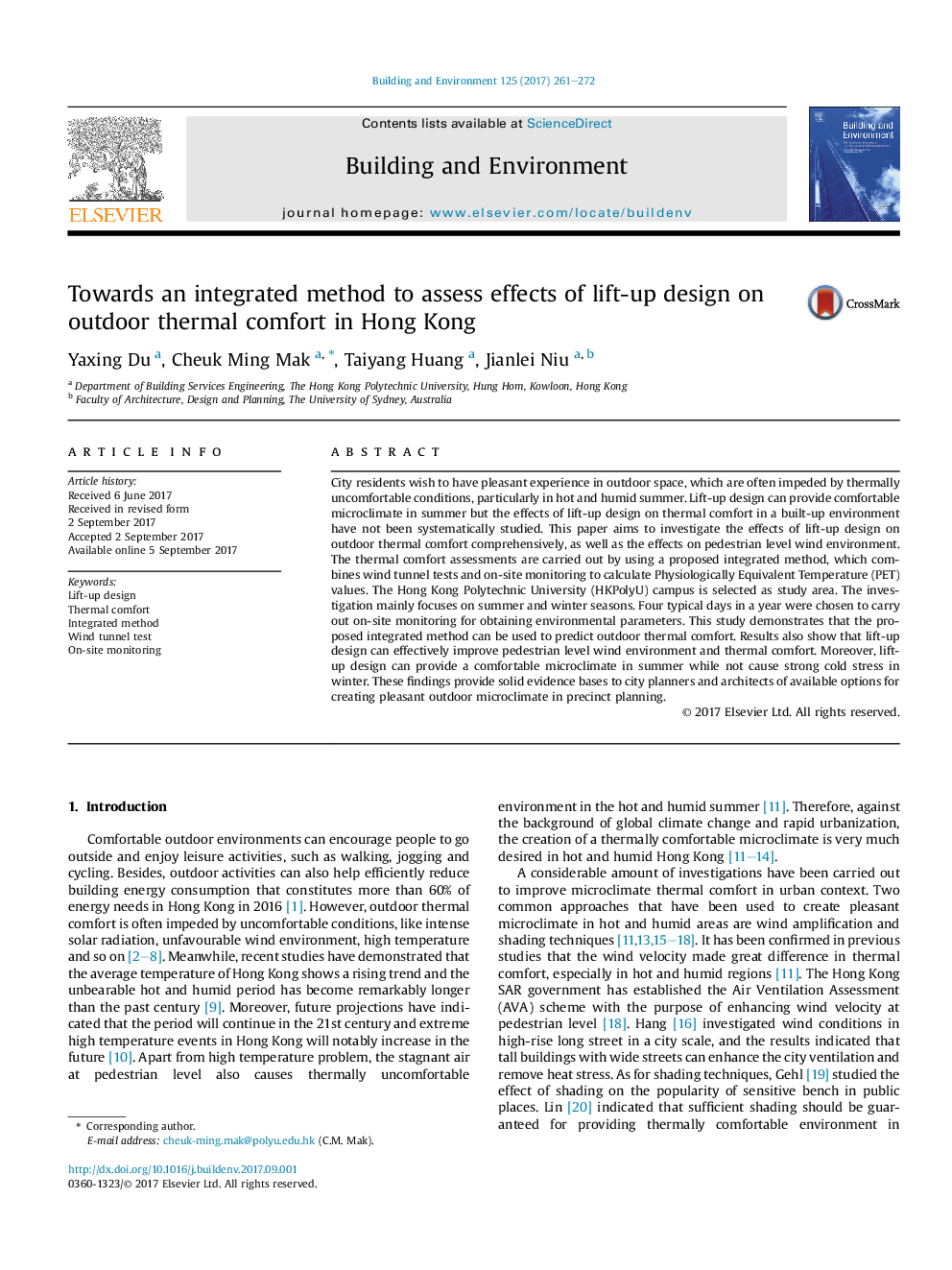| Article ID | Journal | Published Year | Pages | File Type |
|---|---|---|---|---|
| 6479228 | Building and Environment | 2017 | 12 Pages |
â¢An integrated method is proposed to assess outdoor thermal comfort seasonally.â¢Effects of lift-up design on wind environment and thermal comfort are evaluated.â¢Lift-up design can effectively improve wind environment and thermal comfort.â¢Lift-up design can provide thermally comfort microclimate in hot and humid summer.
City residents wish to have pleasant experience in outdoor space, which are often impeded by thermally uncomfortable conditions, particularly in hot and humid summer. Lift-up design can provide comfortable microclimate in summer but the effects of lift-up design on thermal comfort in a built-up environment have not been systematically studied. This paper aims to investigate the effects of lift-up design on outdoor thermal comfort comprehensively, as well as the effects on pedestrian level wind environment. The thermal comfort assessments are carried out by using a proposed integrated method, which combines wind tunnel tests and on-site monitoring to calculate Physiologically Equivalent Temperature (PET) values. The Hong Kong Polytechnic University (HKPolyU) campus is selected as study area. The investigation mainly focuses on summer and winter seasons. Four typical days in a year were chosen to carry out on-site monitoring for obtaining environmental parameters. This study demonstrates that the proposed integrated method can be used to predict outdoor thermal comfort. Results also show that lift-up design can effectively improve pedestrian level wind environment and thermal comfort. Moreover, lift-up design can provide a comfortable microclimate in summer while not cause strong cold stress in winter. These findings provide solid evidence bases to city planners and architects of available options for creating pleasant outdoor microclimate in precinct planning.
